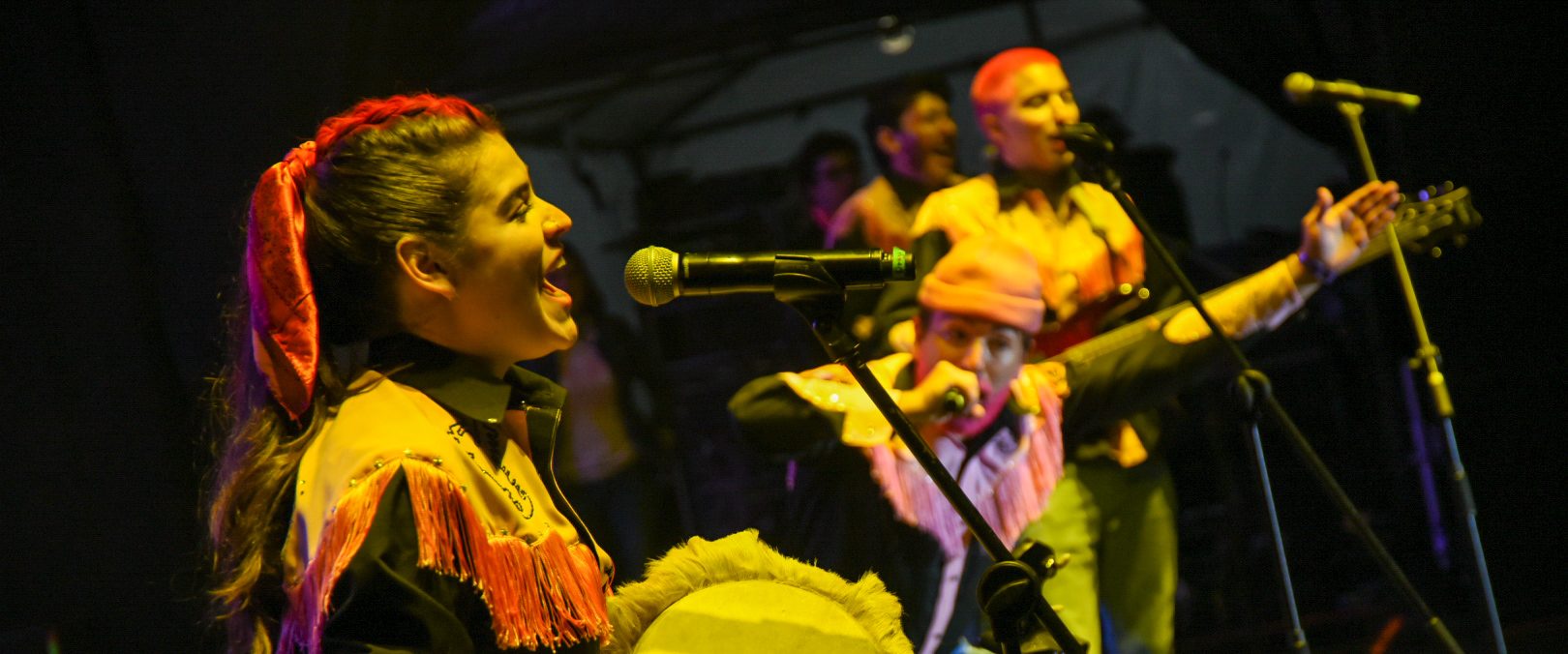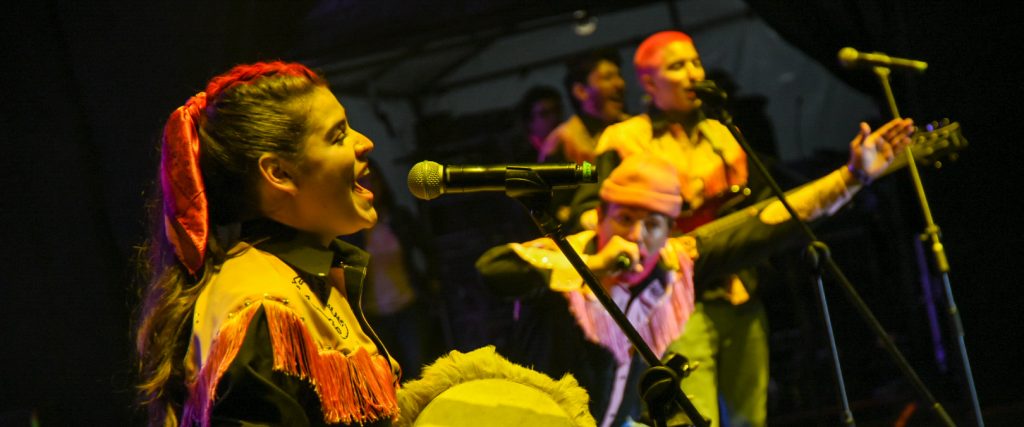There are many free festivals in the world, but none like Rock al Parque. A date that is celebrated every year as a sacred ritual, a mandatory attendance party, a unique moment in the year, and the biggest celebration of what it means to be young, rebellious, and diverse. Rock al Parque is where the floor is witness to drizzles that seem eternal, pogos (mosh pits) where adolescent fury is released; a burning sun where the sweet aroma of marijuana rises; where more than 100,000 people embrace their throats in a chorus that sounds colossal; where young kids leave their houses without permission and another one loads her grandmother on her shoulders, stealing all the attention around them.
From July 29 to July 1, the Simón Bolívar Park in Bogotá was the setting for the celebration of the 25 years of the largest free and open rock festival in Latin America. Three hundred forty-three thousand souls lived for three consecutive days at a party that, from the initial line up, celebrated the legacy of rock in Spanish in all its geography: Juanes, Fito Páez, Gustavo Santaolalla, Zeta Bosio (member of Soda Stéreo) with his band Shoot The Radio, Pedro Aznar, Los Amigos Invisibles, Babasonicos, El Tri, and many more. On the other hand, it also brought nostalgia to memory with the show of 31 Minutos, the irreverence with Silverio, Bogotá’s metal spirit with Sodom, Angra, and Deicide; the powerful experimental folk tradition with Curupira, the visceral electronic music with Kapbambino and the massive love for reggae with Zona Ganjah and Channel One Sound System.
Here are the most memorable moments from the 25 years of Rock al Parque.
10
Ska is Not Dead
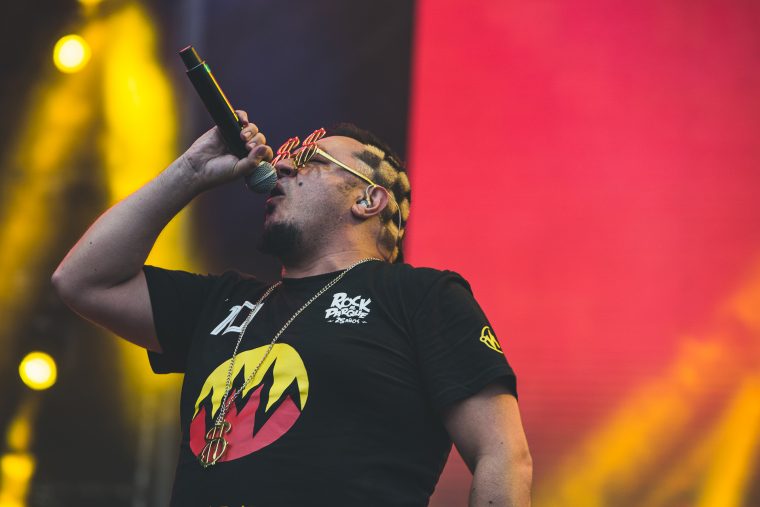
During the first decade of the new millennium, ska had one of its most important moments in Bogotá; a fertile scene that although could not stay together, left behind several memorable bands. In this edition of Rock al Parque, The Klaxon and La Severa Matacera were responsible for reviving the adolescent spirit of the rudeboys of the early 2000s, a spirit that for a couple of years has been revived by new blood and a union with some of the pioneers of the movement. The Klaxon took us back to the days of the release of his album Obras Públicas, with classics such as “La sombra,” the ska version of “El Aguacate” by Julio Jaramillo, and “Qué más quisiera.” La Severa Matacera showed not only its festive songs, but a tribute to several of the national acts that have stepped Rock al Parque such as Alerta Kamarada, Desorden Social, and La Pestilencia.
9
Odio a Botero
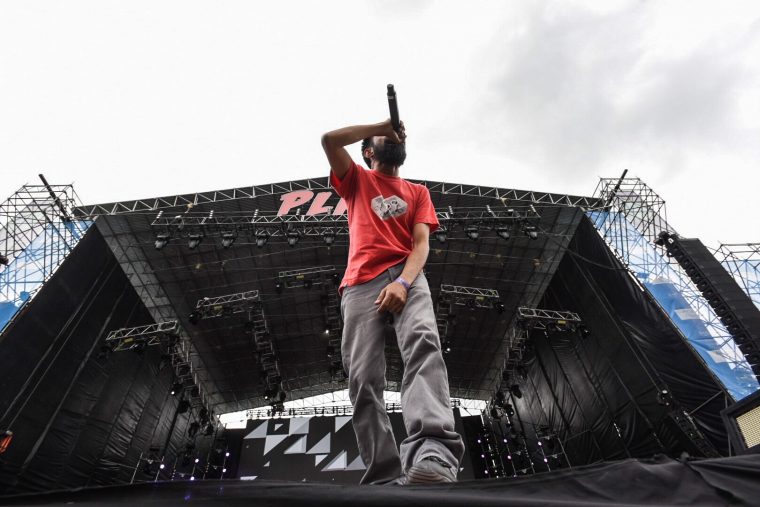
In June 2015, René Segura, vocalist of Odio a Botero, dismissed his band forever while in a Chapinero bar full of young people packed with anger. In 2018, the band released an album, and after having promised never to return, there they were celebrating the 25th anniversary of the festival on the main stage. They celebrated their 15 years of making enemies with a punk satire that has unleashed their rage in songs and has left reflected a discography between the mockery and the restlessness of living in this third-world platanal. “Pogo Criminal,” “R.U.M.B.A.,” “No importa,” and “La lechonería manson” were recorded in memory of that youth that slowly was filling the place and enlarging a necessary pogo.
8
Satan, Metal & Destruction
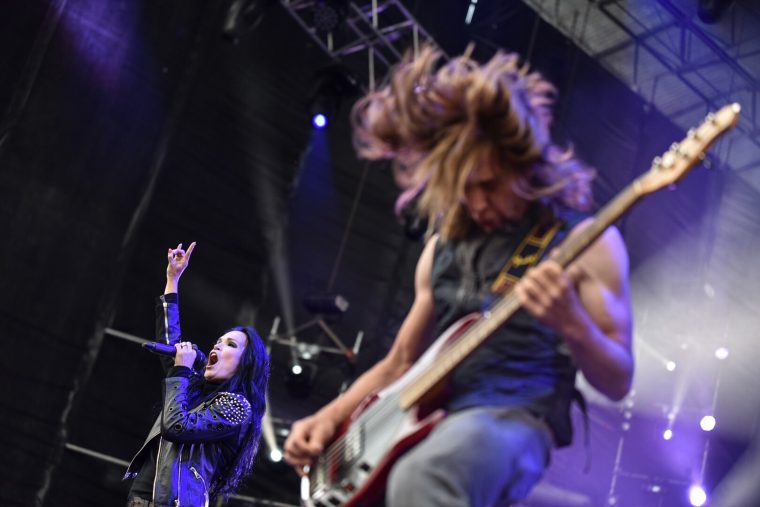
Historically, the first day of Rock al Parque is reserved for metalheads. Almost 85,000 people shouted until they were hoarse with the stridency that entails seeing live bands like Deicide, Internal Suffering, Angra, Dying Fetus, and the devastating vocal forcefulness of Tarja. The day was completely memorable: local and international acts were at the same level; although they say that rock is dead, or that we are living from the nostalgia of seeing bands that come regularly to the country, the truth is that the attitude of its audience has no point of comparison and therefore will never let it die.
7
Zona Ganjah
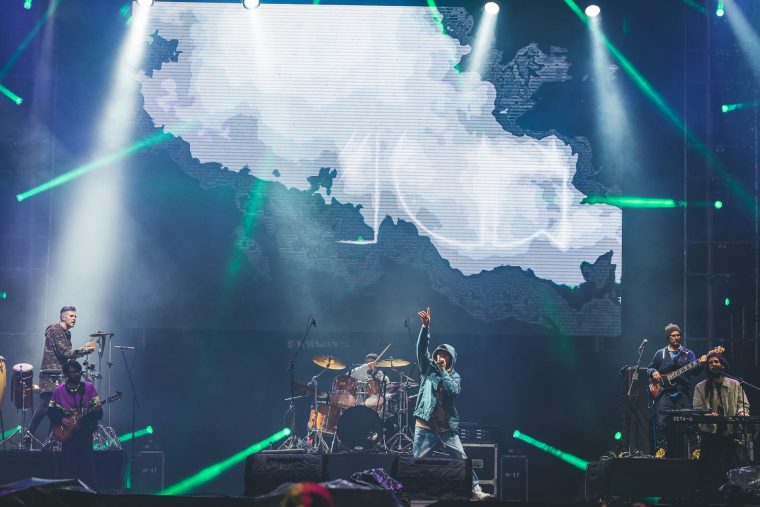
“Don’t push, you are not leaving space to smoke,” said a young man right next to me, minutes before Zona Ganjah opened their set with, “De la tierra crece.” In a matter of minutes, I had advanced about five meters toward closer to the stage, concentrating only on my breathing. I looked back to see the infinite sea of people. The band was playing in the middle of a thick cloud of marijuana smoke and people who connected to their energy lifted them up to the Mount of Zion.
6
Argentine Rock in Bogotá
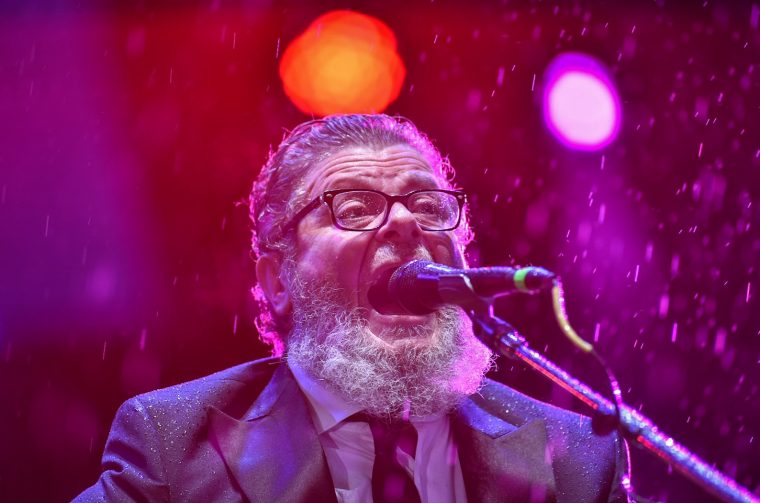
With Pedro Aznar, Zeta Bosio, and Gustavo Santaolalla at Rock Al Parque, almost the poster of the geniuses of the Argentine rock in the festival was completed. Charly García, Fito Páez, Alberto Spinetta, and Andrés Calamaro passed through and made history, and only Gustavo Cerati was left to complete a dream list. However, on the last day of the festival, a litter of geniuses who have served as the backbone of Argentine rock, and therefore rock in Spanish, took the stage. The first was Gustavo Santaolalla, who “was crying in the backstage [area], moved [by] the thousands of people there waiting for him,” according to “Chucky” Garcia, music programmer of the festival. Santaolalla, a mastermind winner of all the prizes in music, performed a fine selection of his discography, oscillating between “Ando rodando” (from his first self-titled album), “No sé qué tienen las penas” (from his 2016 album, Qhapaq Ñan), songs from his soundtrack Motorcycle Diaries, and the video game The Last of Us. Pedro Aznar would then come with classics like “Mientes,” a song that he recorded with Charly García for his album Tango 4, and “A primera vista,” from his album Cuerpo y Alma. Finally, Fito Páez with his visceral cries, played a set of classics and his eternal jam with Juanes (“Ciudad de pobres corazones”). He then said goodbye to 100,000 people up in front by almost whispering the chorus of “Dale alegría a mi corazón.” Everything, as a whole, was sublime, nostalgic, and beautiful.
5
Aguas Ardientes
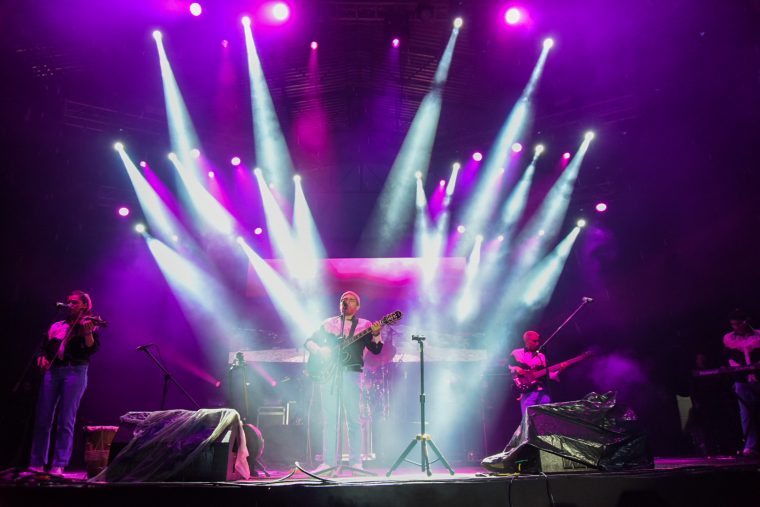
In all the festivals there is a revelation band — one that no one expected to see, but we ended up loving and now can’t stop listening to. In this edition of the festival, Aguas Ardientes was that band. Those who have been there were hypnotized by the sound of a banjo and dirty drum accompaniment, a fierce violin, and a set that between punk and country made us delirious. At this moment, they are one of the Colombian bands with the most projection and, without a doubt, the lyrical component that is a constant mockery and satire of the Colombian reality, giving them that exquisite and street touch that both the unsuspecting spectators like so much.
4
Rita Indiana
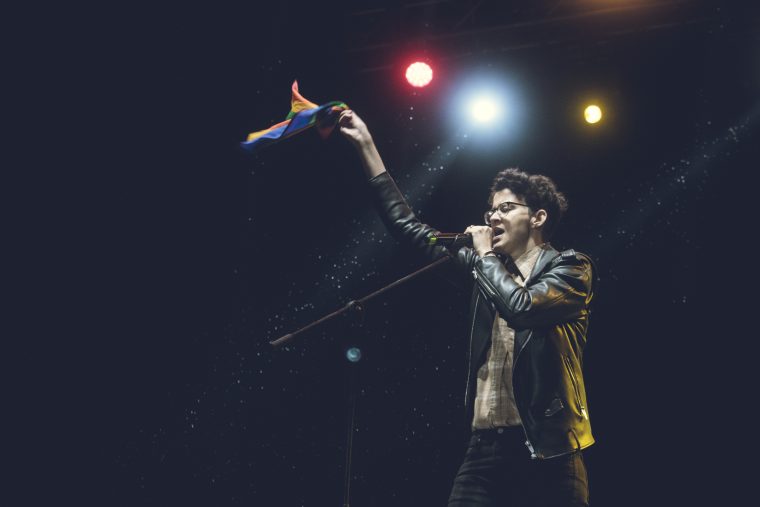
On the same day that Pride was celebrated worldwide, writer, composer and singer Rita Indiana graced the Rock al Parque stage, waving a flag with the rainbow on her hands. She opened her set dedicating “El blu” to her wife. “This song I want to dedicate to my wife. I did it when I met her and I want to dedicate it as if it was the first time,” she said. Indiana is a woman whose art has been the Latin identity from the Antilles, where songs like “Guasábara” speak of how during colonization they almost exterminate the natives of the Caribbean. She performed the light “Equeibol,” but also took time to reflect on how several friends of her adolescence have already died. A show that marks her return to music, the result of what felt like a 10-year long conversation for ‘Chucky’ García. She also used the show to present El Comité, her new band in which the Puerto Rican plena meets metal and punk to create a demon that dances while the fire burns.
Editor’s Note: This entry has been edited. It previously misidentified the song Rita dedicated to her wife and said her band performed Panamanian plena.
3
31 Minutos

The 31 Minutos show was special because of several things: it became the first children’s show at Rock al Parque; it has been the only band to perform for three times at the same festival the same year, and the only one to fill the Jorge Eliécer Gaitán Theater three times in a row on the same day. What happened in the hour and a half of the sold out show was a beautiful nostalgia discharge. It was like going back to one’s school days — when you’d arrive home from school, put on Nickelodeon and see Tulio Triviño and his crew becoming the most popular newscast on the continent. A show full of virtuosity and flashbacks, we chanted to “Bailan sin cesar,” “Señora, devuélvame el balón, o si no, no sé qué haré,” “Mi muñeca me habló,” and “Yo nunca vi televisión.” It was beautiful and perfect.
2
Philharmonic Orchestra as Main
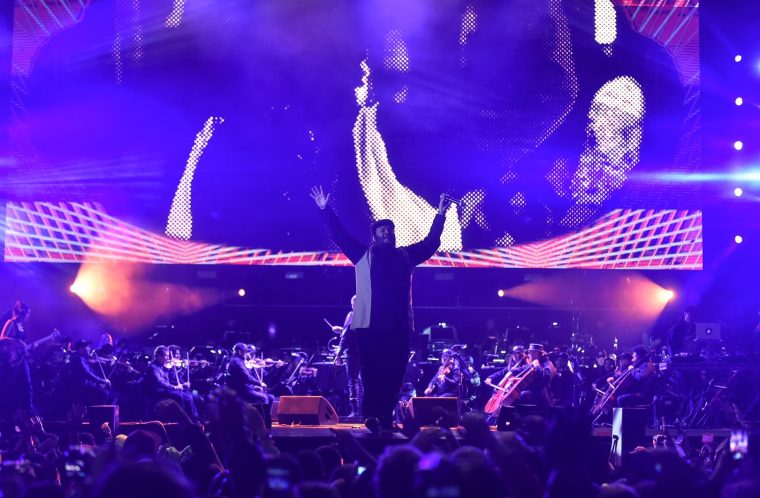
For the first time in the history of the festival, a philharmonic orchestra was in charge of being the main act; the Orquesta Filarmónica de Bogotá sheltered some of the national and international names that have made history in Rock al Parque. The selection of nine songs, with their respective interpreters and masterful arrangements, that were performed were: “Comprendes Mendes” by Control Machete, “El puñal y el corazón” by Café Tacvba, “Penelope” by Robi Draco Rosa, “Mentiras” by Los Amigos Invisibles, “Vestido de Cristal” by Kraken, “Muévete” from Estados alterados, “Ay qué dolor” by La Derecha, and “Maligno” and “Florecita rockera” by Aterciopelados. The last one was sung by all the invited artists to this Spanish-sung rock tribute. As 95 musicians played in the same place, I couldn’t help but think to myself, Never in history will such songs sound as colossal as at this precise moment.
1
Juanes
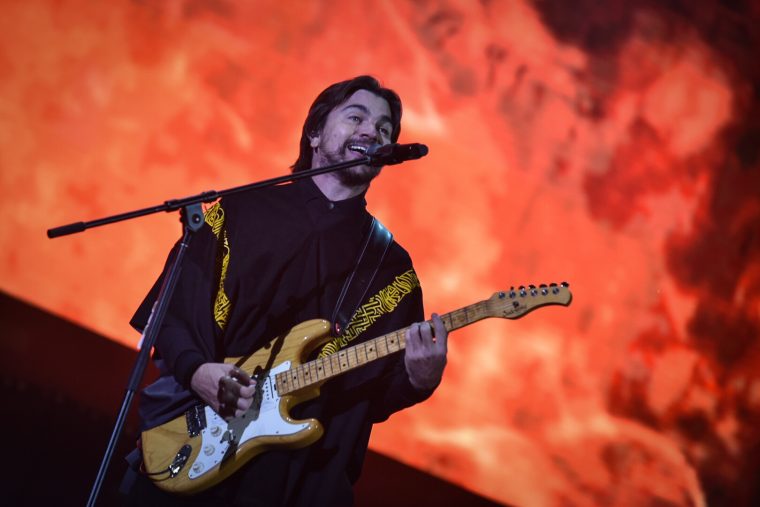
Outside Colombia there are those who ignore the metalhead past of Juanes. His story began to be narrated in a Medellin full of violence because of drug trafficking, and heavy music turned out to be the best way that thousands of young people managed to express their feelings of pain, frustration, and anger. From there Ekhymosis was born and with this band Juanes as its main vocalist. However, for the 25 years of the festival Juanes was never invited, until this edition in which his participation was memorable from beginning to end. For an hour he reminded us that songs like “A Dios le Pido” and “Fíjate bien” — songs that were written 20 years ago — were still painfully valid in a country that’s in debt with millions of victims of war and still refuses to search for peace and an end to conflict. On the stage, and in the middle of his show, he reminded us of the heart-rending death of Maria Del Pilar Hurtado, a social leader from Tierra Alta, Córdoba, whom days before was shot in front of his son. Meanwhile in his discourse, he told us that love was the most important thing in the world; he performed a cover of “Cuando pase el temblor” by Soda Stéreo, with Zeta Bosio accompanying him on bass. He paid tribute to Gustavo Cerati whom surely would’ve enjoyed being a part of this amazing night. He covered the hymn “La tierra” with Andrés Cepeda and Fonseca. He reminded us of his time with Ekhymosis when performing “Sólo.” Lighting fire on the pogos during his cover of “Seek and Destroy” by Metallica, let us know that in his adolescence he was more of a metalhead than the 100,000 people could imagine.



